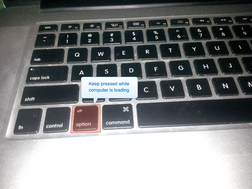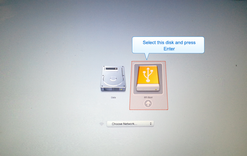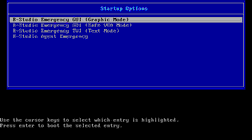





- Contents
- Index
- A -
Apple CoreStorage/FileVault/Fusion Drive Volumes
- B -
Bad Sectors settings
Set default read retries count for all drives
BitLocker System Drive Encryption
Broken File Name
Rename and change all invalid symbols to:
Broken File Name options
Button
Buttons
- C -
Connect to R-Studio settings
Connecting Virtual Objects to the System
Contact information and technical support
Contextual menu
Contextual menu
Find Previous Versions of the File
Find Template Signature Previous
Remove All Scanned Information
Contextualt menu
Create menu
Creating and saving your own RAID configuration
Creating Startup Disks for Mac and Linux Computers
- D -
Data Copy in Text/hexadecimal editor
Data Recovery on HFS/HFS+ File System
Description Files for RAID Configuration
Devices to Store Recovered Files
Dialog box
Dialog boxes
Edit Block RAID Layout Presets
Please configure R-Studio Agent for Mac
Please configure R-Studio Agent for Windows
R-Studio Agent for Linux Configuration
There is not enough space on the disk
Drive menu
- E -
Edit menu
Find Template Signature Previous
Editor tabs
Exclusive Region options
- F -
Fast Search for Lost Partitions
File Already Exists
File Information R-Studio Technician/T80+
File mask options
File menu
Load File Names from File and Mark
File Systems settings
Default encoding for Ext2/Ext3/Ext4/UFS volumes
Default encoding for HFS volumes
File Type Signature Specification
File Types
Find options
Find/mark objects only in real paths, ignore links to folders
Find/Mark options
Finding Previous File Versions
Forensic Data Collection Audit Log
- H -
Help menu
Hidden Attribute
High Sierra- Monterey: Running R-Studio for the First Time
- I -
Image Options (Advanced)
Image options (Main)
Compressed image (R-Drive Image compatible)
Image type:
Byte to byte image to a physical disk
Compressed image (R-Drive Image compatible)
VMDK (VmWare Virtual Machine Disk)
- K -
Known File Types settings
- L -
Log options
Maximum messages in the Event Log
- M -
Main settings
Reset all hidden notifications
Messages
Double-click a logical disk...
Mount options
- N -
Nested and Non-Standard RAID Levels
- O -
Opening several disks/partitions in one tab
Opening Virtual Disks from the Files Panel
- P -
Panels
Panes
Properties tab
- Q -
- R -
Recover options
Condense successful restoration events:
Recover alternative data streams:
Recover real folders structure
Region options
Contact information and technical support
Installing R-Studio Agent Emergency Startup Media Creator
Starting a Computer with the R-Studio Agent Emergency Startup Disk
R-Studio Agent for Mac menu
R-Studio Agent for Windows main panel
Contact Informaiton and Technical Support
Installing R-Studio Emergency Startup Media Creator
Properties and Text/Hexadecimal Viewer
Starting a Computer with the R-Studio Emergency Startup Disks
R-Studio Emergency Startup Media Creator
R-Studio menu
- S -
Save only marked files/folders from...
Scan options
Search options
Settings
Startup Media Troubleshooting Options
Symbolic Links
Don't show symbolic links by default (Technician version)
Recovery as it is (Technician version)
Show folder symbolic links as links to their targets, without target content (Technician version)
Symbolic links display settings
Symbolic links recovery options
Syntaxis of a Description File for RAID Configurations
System Options
- T -
Tabs
Technical Information and Troubleshooting
Tools
Tools menu
- U -
- V -
Ventura+: Running R-Studio for the First Time
View menu
Volume Sets, Stripe Sets, and Mirrors
- W -
Window
Working with RAID 6 Presets
Home > R-Studio Emergency > R-Studio Emergency Operation > Starting a Computer with the R-Studio Emergency Startup Disks
Starting a Computer with the R-Studio Emergency Startup Disks
We recommended that you print out this help page and have the hardcopy on hand while you are performing this action.
If there is a non-IDE disk controller in your system, or you plan to use network disks or external hardware devices, first check the Hardware Compatibility List .
If you plan to use any external device, turn it on before starting the system.
If the motherboard in your computer supports the Serial ATA (SATA) devices, but IDE disks are also present, only the SATA devices should be set to the Enhanced Mode in BIOS.
To start the computer with the R-Studio Emergency startup CD/DVD disc or any removable device,
| 1 | Make sure that the first startup device in the system BIOS is the CD/DVD drive or the removable device |
Disable " Secure boot " in the system BIOS if your computer is certified to run Windows 8. Refer to your system documentation for details.
| 2 | Insert the R-Studio Emergency startup CD/DVD disc and start your computer |
 If you have a Mac computer
If you have a Mac computer
|
To start a Mac computer with the R-Studio Emergency startup disk, 1. Insert a CD/DVD disc or connect a USB disk 2. Switch the Mac on. 3. While loading, press the Option key on the Mac keyboard (the Alt key if you use a non-Apple keyboard).
4. Select the EFI boot disk and press Enter .
R-Studio Emergency will start loading. |
Then a startup screen will appear:
Select the R-Studio Emergency GUI (Graphic Mode) to run R-Studio Emergency in the graphic mode in which its user interface is similar to the Windows version. If R-Studio Emergency cannot run in this mode, restart the system in the Safe VGA mode (only VESA-compliant) which is compatible with most video cards and monitors. If it fails too, select the Text mode in which the R-Studio Emergency user interface is shown in the pseudo-graphic mode compatible with all video cards. The help describes this pseudo-graphic mode.
| > | R-Studio Emergency will start and its Device/Disk panel will appear |
To start the computer with the R-Studio Emergency startup floppy disks,
| 1 | Make sure that the first startup device in the system BIOS is A (Floppy) |
Refer to your system documentation for details.
| 2 | Insert the first startup floppy disk and start your computer |
| > | The following text will appear on the screen: |
|
Loading Uncompressing ... OK, starting the kernel VFS: Insert the second boot disk and press ENTER |
| 3 | Insert the second disk and press ENTER . |
| > | R-Studio Emergency will start and its Device/Disk panel will appear |
Home > R-Studio Emergency > R-Studio Emergency Operation > Starting a Computer with the R-Studio Emergency Startup Disks
- R-Studio Technician: activation using a USB stick
- Data Recovery Guide
- Why R-Studio?
- R-Studio for Forensic and Data Recovery Business
- R-STUDIO Review on TopTenReviews
- File Recovery Specifics for SSD devices
- How to recover data from NVMe devices
- Predicting Success of Common Data Recovery Cases
- Recovery of Overwritten Data
- Emergency File Recovery Using R-Studio Emergency
- RAID Recovery Presentation
- R-Studio: Data recovery from a non-functional computer
- File Recovery from a Computer that Won't Boot
- Clone Disks Before File Recovery
- HD Video Recovery from SD cards
- File Recovery from an Unbootable Mac Computer
- The best way to recover files from a Mac system disk
- Data Recovery from an Encrypted Linux Disk after a System Crash
- Data Recovery from Apple Disk Images (.DMG files)
- File Recovery after Re-installing Windows
- R-Studio: Data Recovery over Network
- How To Use R-Studio Corporate Package
- Data Recovery from a Re-Formatted NTFS Disk
- Data Recovery from an ReFS disk
- Data Recovery from a Re-Formatted exFAT/FAT Disk
- Data Recovery from an Erased HFS Disk
- Data Recovery from an Erased APFS Disk
- Data Recovery from a Re-Formatted Ext2/3/4FS Disk
- Data Recovery from an XFS Disk
- Data Recovery from a Simple NAS
- How to connect virtual RAID and LVM/LDM volumes to the operating system
- Specifics of File Recovery After a Quick Format
- Data Recovery After Partition Manager Crash
- File Recovery vs. File Repair
- Data Recovery from Virtual Machines
- How to Connect Disks to a Computer
- Emergency Data Recovery over Network
- Data Recovery over the Internet
- Creating a Custom Known File Type for R-Studio
- Finding RAID parameters
- Recovering Partitions on a Damaged Disk
- NAT and Firewall Traversal for Remote Data Recovery
- Data Recovery from an External Disk with a Damaged File System
- File Recovery Basics
- Default Parameters of Software Stripe Sets (RAID 0) in Mac OS X
- Data Recovery from Virtual Hard Disk (VHD/VHDX) Files
- Data Recovery from Various File Container Formats and Encrypted Disks
- Automatic RAID Parameter Detection
- IntelligentScan Data Recovery Technology
- Multi-pass imaging in R-Studio
- Runtime Imaging in R-Studio
- Linear Imaging vs Runtime Imaging vs Multi-Pass Imaging
- USB Stabilizer Tech for unstable USB devices
- Joint work of R-Studio and PC-3000 UDMA hardware
- Joint work of R-Studio and HDDSuperClone
- R-Studio T80+ - A Professional Data Recovery and Forensic Solution for Small Business and Individuals Just for 1 USD/day
- Backup Articles
- R-Drive Image Standalone and Corporate license transferring
- Fixing Windows update error 0x80070643 with R-Drive Image
- Backup with Confidence
- R-Drive Image as a free powerful partition manager
- Computer Recovery and System Restore
- Disk Cloning and Mass System Deployment
- Accessing Individual Files or Folders on a Backed Up Disk Image
- R-Drive Image startup / bootable version
- File Backup for Personal Computers and Laptops of Home and Self-Employed Users
- Creating a Data Consistent, Space Efficient Data Backup Plan for a Small Business Server
- How to Move the Already Installed Windows from an Old HDD to a New SSD Device and Create a Hybrid Data Storage System
- How to Move an Installed Windows to a Larger Disk
- How to Move a BitLocker-Encrypted System Disk to a New Storage Device
- How to backup and restore disks on Linux and Mac computers using R-Drive Image
- Undelete Articles
- Get Deleted Files Back
- Free Recovery from SD and Memory cards
- R-Undelete: Video Recovery
- Recovery from an External Device with a Damaged File System
- File recovery from a non-functional computer
- Free File Recovery from an Android Phone Memory Card
- Free Photo and Video File Recovery Tutorial
- Easy file recovery in three steps




